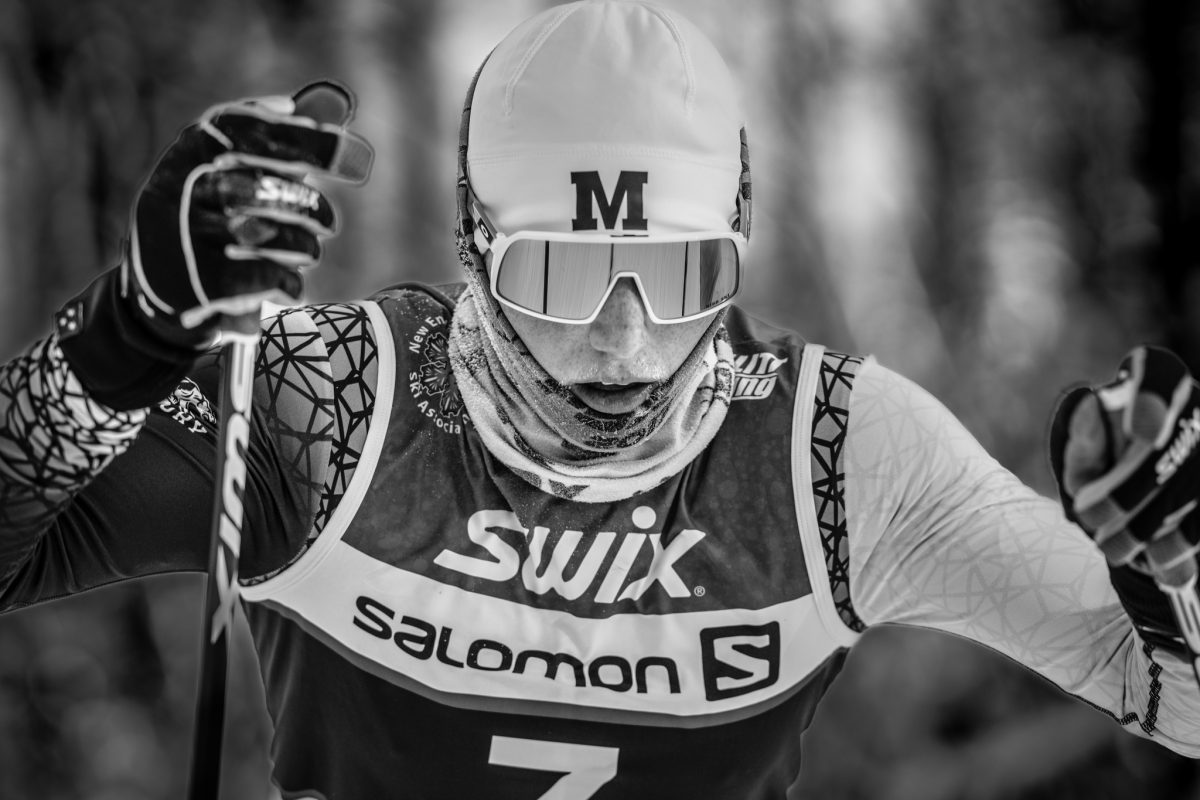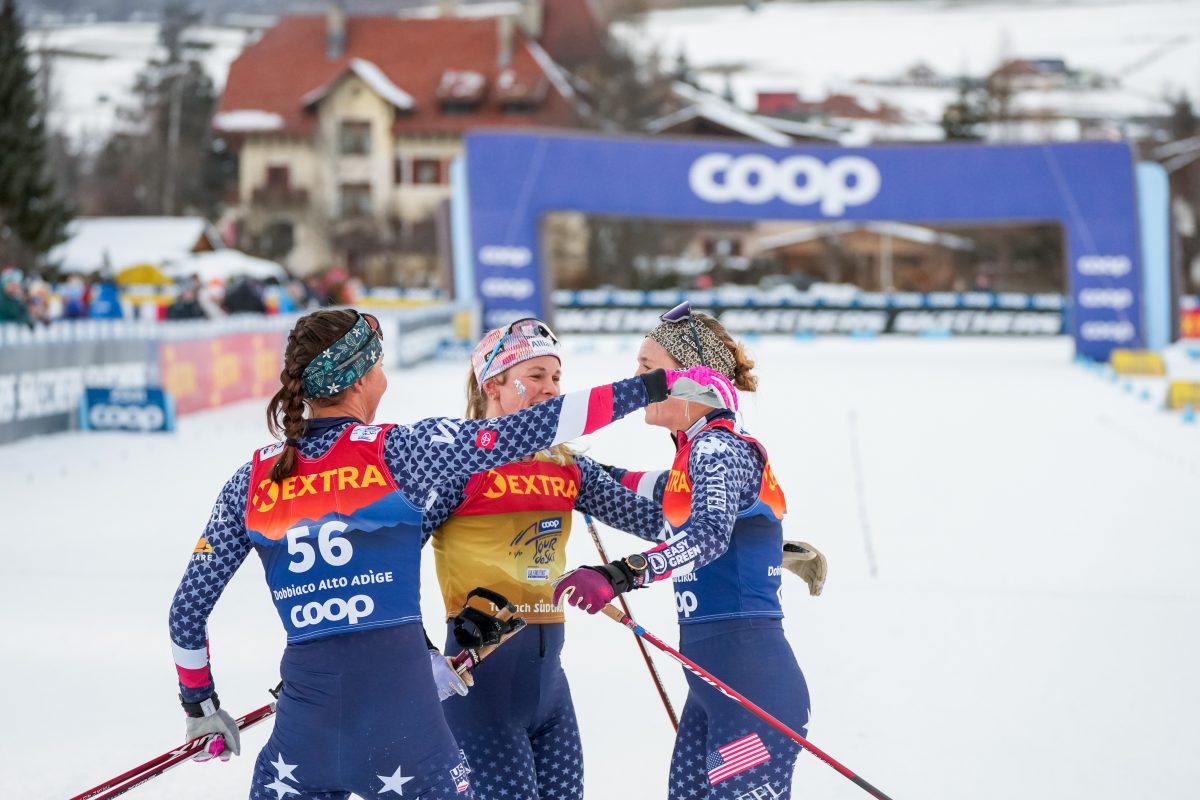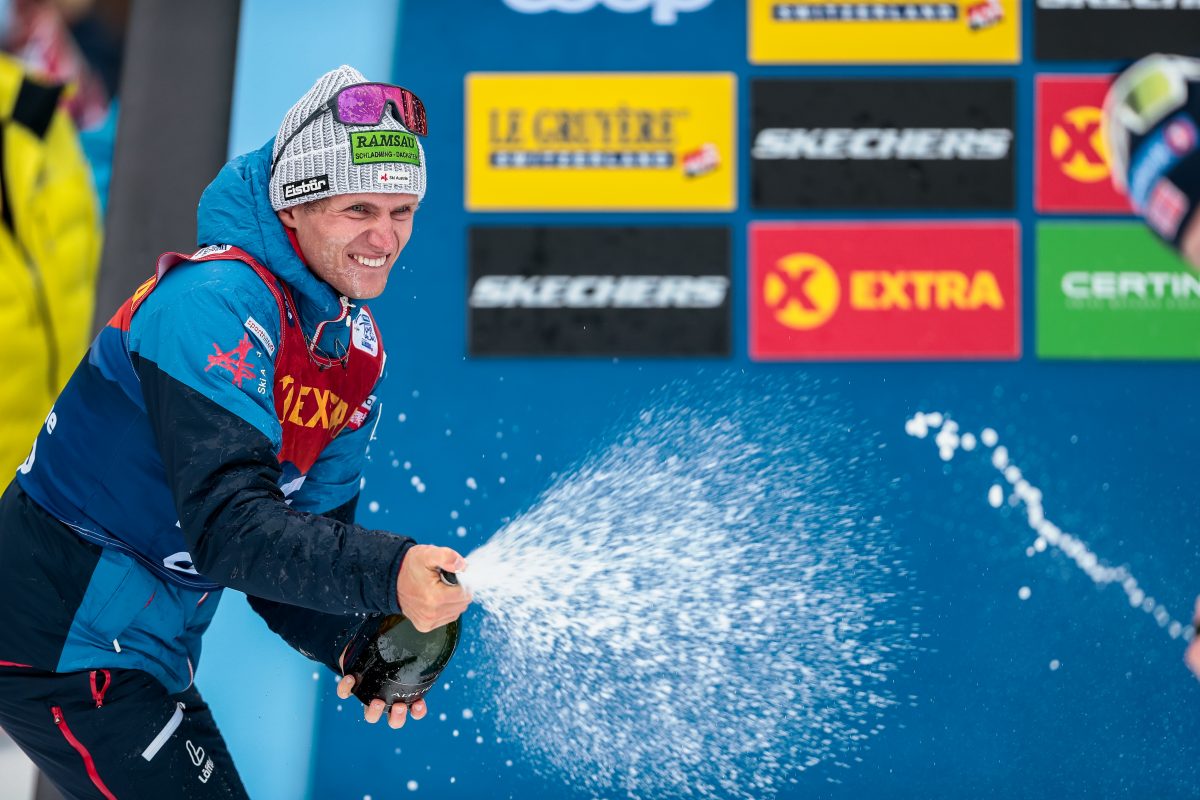ENGERDAL, NORWAY – For as long as she can remember, Maja Solbakken wanted to do everything her older brother Martin Andersen did. Siblings of accomplished athletes often feed off the energy and determination of their brother or sister — that is true not only for those on the World Cup circuit, but also for those who are the second-tier.

The youngest of three siblings, Maja, 16, grew up in the rural Norwegian community Engerdal, close to the Swedish border. Maja always found Martin, 22, to be a support and an inspiration. She said she feels fortunate to have a brother who has helped her pave the way, fallen into the training traps and dealt with them.
Four years ago, Martin and three of his ambitious training partners established a privately funded elite development program called Team Norgeshus. The young athletes calculated their needs, created a budget, went after sponsors and secured the funding for the team, then hired coaches and a support staff, designed camp schedules, training plans and competition plans. So far, they’ve accomplished several top Scandinavian results and are going after the U-23 circuit.
“Martin has a lot of experience to share, and gives me pointers all the time,” Maja said, explaining that he helps her with all aspects of training and racing.

“One thing he helps me with is technique, but he’s also really good at seeing when I’m about to fall into the overtraining trap. Then he gets really stern with me and tells me to back off. He’s had a serious bout of overtraining and been in the pits, and he never wants me to have to go there. That’s super helpful to me, since it’s so hard to see it coming yourself,” she said.
Maja also recognizes that there are significant advantages to being the youngest racer in the family. “My mom and dad have learned a lot from supporting Martin over the years and taking him to races, so they too have a lot of experience at a variety of racing levels, from nationals to local events. They know what’s going on, and that puts me at ease and cuts down on nervousness,” Maja said.
No rivalry, no pressure
“I never felt like I had to compete with Martin. He’s six years older than me, so there’s no way I can do everything he does. But I definitely look at what he did when he was my age, and I want to meet or beat that,” Maja said.
However, whatever pressure there is to perform is entirely her own. Her parents never compare her to Martin, and never expected her to follow his lead.

“My mom and dad just want me to be happy doing what I do. They are amazing,” Maja said, pointing out that she’s seen some parents who put a lot of pressure on their children.
“My parents never pressured me to perform, which is something I have seen in some families where there are two or more good siblings,” Maja said, and continued: “The only the pressure is that which I put on myself. I want to perform and improve, and I want to show everyone who supports me that I’m worth the effort — I want to deliver, and I want to give something back.
Ambitious goals
Maja has always set ambitious goals for herself, and her ultimate dream is no less than the Olympics. But realistically, she knows she has a long way to go.
“I’d like to see how far I can get. Of course, I would like to be best in the world, and go to the Olympics, the World Championships and the World Cup eventually, but those are pretty long-term and hairy goals,” she said.
Accordingly, Maja has set up partial goals along the way and has a systematic approach to her progression.
“Before [reaching the Olympics], I realize I have to do the standard progression, aim for top-five, top-three and then number one at the Norwegian nationals and the Norwegian national racing circuit. I hope I can qualify for the junior national team and go to the Junior World Championships in a couple of years,” Maja said.
She believes she has what it takes to go all the way, but that she has to train smart to achieve her Olympic dreams.
“I think I can get as good as I want to. I have the potential to go far. Whether I do is a matter of what I do to get there,” she said.
Training smart
Maja believes there is more to becoming the best than simply volume. She explains that her training philosophy focuses on quality over quantity.
“I don’t think logging the most hours necessarily makes you the best skier. What matters is what you do during the hours you log,” Maja said. She is keenly aware of how she spends her workouts in order to maximize the training effect. Each workout has a specific purpose, depending on what she needs to emphasize at a given time.
“You need to focus on the tasks at hand, and really be present both mentally and physically. I try to have at least one specific task to focus on for every workout. For instance, if I do a skate rollerski workout, I try to think about lifting my poles high enough when I V2,” she said.
However, Maja notices that sometimes skiers seem more obsessed with logging hours than focusing on what they get from the workout. She thinks girls are particularly vulnerable to the junk miles routine.
“I think a lot of skiers just lollygag around, especially on long distance workouts. They just get lost in chatting, and forget what the job is. I like to catch up on talk before and after, but when I train, I’m into training,” she said.
Pursuing the elite at Lillehammer

This fall, Maja moved away from her parents’ house to attend the national elite cross-country academy training group in Lillehammer and pursue her ski career there. While the 16-year-old admits that it was hard to leave home, she’s not entirely on her own. Martin moved to Lillehammer for college a couple of years ago, and she’s sharing an apartment with him. For some siblings, living so close together could spell trouble, but Maja says it’s an excellent setup for them.
“We actually enjoy each other’s company a lot. Martin has a lot of experience living on his own, cooking his own meals and balancing life, school and training,” she said, adding that the training group program is a step toward her overall ski goals.
Different training programs
Although Maja and Martin have similar approaches to training and development, they recognize that men and women are made differently. Maja admits that she wants to do everything Martin does, but realizes he can handle a larger volume and tougher workouts—both because he’s older and has a bigger base, but also simply because he’s a guy.
“We do have to train differently. He trains more volume than I do. I just have to face it: Girls just can’t handle the same volume as guys. They have more muscle mass. There is a reason girls don’t race the same distances,” Maja said.
Maja adds that she also tries to focus on track in the summer, while Martin is strictly focused on skiing. That translates to slightly different approaches to methods and intensity during the dryland season. “I run more than Martin does. He bikes a lot more than I do. That’s partially because I also train for medium and long distances track and field (800m, 1500m and 3000m), and partially because I feel that running is the best way to increase my capacity.”
Maja also believes women are more dedicated than men in some ways, and therefore more likely to follow their training plans like a bible—which she notes is both an advantage and a potential drawback.
“I think girls are more likely to follow a training program than guys. If we have a plan, we stick with it. It seems like guys are better at listening to their bodies and adjusting their training according to how they feel. I think guys don’t feel as guilty for going rock climbing or fishing instead of doing the planned workout if they feel like it. But then again, studies show that girls have better core strength than guys, so maybe there is something to sticking with the program after all,” she said with a grin.
Inge Scheve
Inge is FasterSkier's international reporter, born and bred in Norway. A cross-country ski racer and mountain runner, she also dabbles on two wheels in the offseason. If it's steep and long, she loves it. Follow her on Twitter: @IngeScheve.



